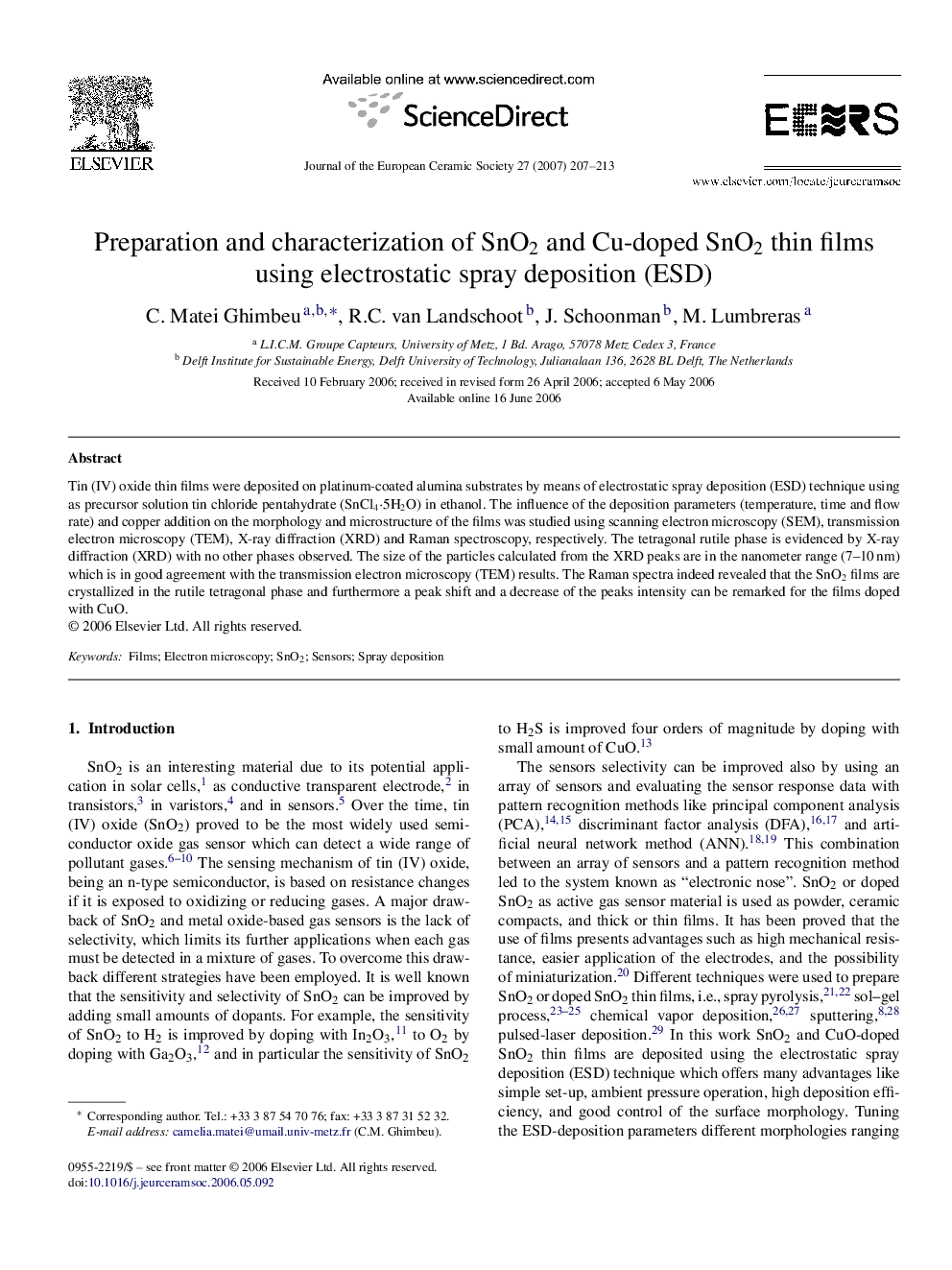| Article ID | Journal | Published Year | Pages | File Type |
|---|---|---|---|---|
| 1476969 | Journal of the European Ceramic Society | 2007 | 7 Pages |
Tin (IV) oxide thin films were deposited on platinum-coated alumina substrates by means of electrostatic spray deposition (ESD) technique using as precursor solution tin chloride pentahydrate (SnCl4·5H2O) in ethanol. The influence of the deposition parameters (temperature, time and flow rate) and copper addition on the morphology and microstructure of the films was studied using scanning electron microscopy (SEM), transmission electron microscopy (TEM), X-ray diffraction (XRD) and Raman spectroscopy, respectively. The tetragonal rutile phase is evidenced by X-ray diffraction (XRD) with no other phases observed. The size of the particles calculated from the XRD peaks are in the nanometer range (7–10 nm) which is in good agreement with the transmission electron microscopy (TEM) results. The Raman spectra indeed revealed that the SnO2 films are crystallized in the rutile tetragonal phase and furthermore a peak shift and a decrease of the peaks intensity can be remarked for the films doped with CuO.
